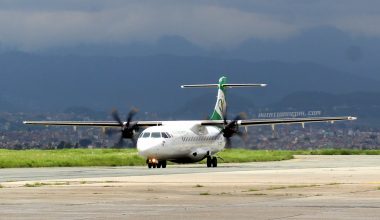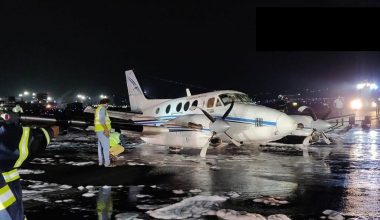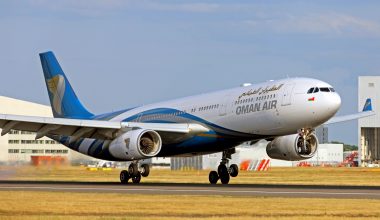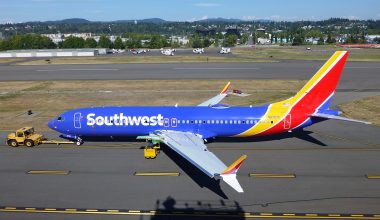Nepal Airlines, the flag carrier of Nepal, received six Beijing-made aircraft starting in 2014, of which it purchased one Xian MA60 and three HarbinY12E aircraft on concession loan, and two airplanes, including one MA60 and one Y12E, was granted by the Chinese government. The first two Chinese MA60 aircraft touched down the Nepalese land in 2014, and the first batch of Y12E also joined the fleet in November 2014. While these Chinese aircraft were expected to mark the beginning of the new age of operations in Nepal, the tables turned out, and they became more liabilities than assets. These six China-made aircraft have pushed Nepal Airlines into a dire economic and vicious debt trap as they incurred heavy losses to Nepal since they were first rolled out. While aircraft are a valuable and precious asset for any airline to generate revenue, the two Xian MA60s and four Harbin Y12Es of Nepal Airlines have become woes and a headache for Nepal. Why are Chinese aircraft of Nepal Airlines causing problems?

Unsuitable for Nepalese airspace
These planes were not suitable for Nepalese airspace. These planes resulted from a government-to-government deal between Nepal and China. While Nepal had been prodding China to provide planes in grants, China made it clear that Nepal would have to purchase some aircraft to acquire a few for free. Even after an inspection committee from Bangladesh reported the unworthiness of aircraft for their country, the Nepal government proceeded to acquire Chinese planes. Hence, the deal took place in 2012. Guided by greed for commission, the suitability of aircraft performance to Nepalese topography and infrastructure was not taken into account. Under the 2012 deal with the Aviation Industry Corporation of China (AVIC), Nepal obtained one MA-60 and three Y12Es worth NPR 3.7 billion in 2014, 2017, and 2018. The EXIM Bank of China offered a soft loan to Nepal Airlines to acquire 56-seater MA60s and 17-seater Y12Es. The parent company of Harbin Aircraft Manufacturing Corporation and Xian Aircraft Company, AVIC, gifted one MA60 and one Y12E aircraft to Nepal two years later.
Lack of skilled human resources
Nepal Airlines doesn’t have skilled staff and crews/engineers to fly and maintain Chinese aircraft, resulting in bare use for operation. Since their delivery in 2014, they have cost Nepal Airlines Corporation (NAC) more money to operate than they brought in, owing to their sub-standard performance and insurance costs which are 35% higher than those of other planes. While other airlines figured out clear plans to operate aircraft before buying them, Nepal Airlines brought the planes first before finding any pilots, instruction pilots, and engineers to maintain them. The poor management decisions on the part of Nepal Airlines led to shortcomings inexperienced manpower to fly them. Despite being sellers, the Chinese government didn’t take any initiative to develop the necessary capacity for operation. It’s been years since the delivery of the first batch of aircraft that NAC didn’t possess any trained pilot, and it remains the same today.

High pilot training costs
Training the pilot for Y12E by Corporation is a costly affair (4 times more than Twin Otter) as there is a lack of skilled pilots with specific skills in Nepal and other countries where these planes are flying. The language barrier also created a hurdle to train pilots from China. There are no training slots for Y12E aircraft, 50% more type rating training cost, repeated simulation training cost of more than 78% for MA-60 as compared to other aircraft, and a payload ban of up to 30% outside Kathmandu.
Lack of spare parts
The other reason Chinese aircraft are causing problems is the lack of easy availability of spare parts. The repair and maintenance of Chinese aircraft are time-consuming and expensive. The spare parts of China-made aircraft cost 75% higher than those required in other aircraft. The manufacturing of spare parts in China takes almost two months to ferry these spare parts to Nepal. The non-availability of ancillary parts in international markets has led to the grounding of aircraft for a long period. The other problems associated with spare parts are small-scale production and the expiration of their warranty period.
Y12E’s failure to meet the expectations
The Y12E aircraft has failed to meet expectations in terms of its performance in airports with short runways and extremely high elevations. The Y12E is a twin-engine turboprop utility aircraft with a seating capacity of up to 17 people. Although Y12E’s performance is up to par while flying to airports in the hilly region, it is ill-suited to serve Nepal’s remote mountain airfields like Lukla, Jomsom, Manang, Simikot, Rara, Jumla, and Dolpa. The state-owned Corporation had intended Y12E to be the airline’s workhorse to fly to remote and tourist destinations as a fitting alternative to the Canadian-built Twin Otter. Although Nepal Airlines has conducted test flights of Y12Es to Lukla, Jomsom, Manang, and Simikot, it hasn’t demonstrated its performance charts.
However, the overrated Y12E failed miserably and turned out to be nothing more than a white elephant for Nepal Airlines Corporation. Following its degrading functionality, Nepal Airlines has been trying to lease out these aircraft to Nepal Army Air Wing to deploy them for emergency and rescue purposes.

Insurance and Parking fees
The Chinese planes brought in 2014-2018 caused a ballooning loss of more than 2 billion, mostly in insurance and operating expenses. Chinese aircraft parking and insurance fees have piled up, amounting to more than Rs 12 million in a month. The parking fees for MA60 and Y12E are Rs 2514 and Rs 685 per day, whereas insurance fees cost USD 61 and Rs 315 for MA60 and Y12E respectively. Adding compensation for pilots and technicians will raise the costs to more than Rs 60 million monthly.
Continuous financial losses
The Chinese aircraft engulfed Nepal Airlines in a financial loss of Rs 1.9 billion from the fiscal year 2014/15 to 2018/19. In six years, the Corporation bore a loss of more than Rs. 5.5 billion as aircraft couldn’t fly at full capacity for even a single day. On the one hand, the carrier has been struggling to pay annual interest on the amount of disbursed loan for procurement, and on the other hand, the six aircraft are grounded.
The Chinese party charges an annual interest rate of 1.5 percent and service charge and management expenses amounting to 0.4% overall of the loan amount, where the loan payback period is 20 years. The Ministry of Finance, which owns the plane, owns the payment of USD 35.1 million of disbursed loans from Nepal Airlines. To add to the miseries, AVIC has informed the Corporation of the payment of debts incurred on buying ancillary equipment, training, technical support, etc. So, the national airline of Nepal is losing money hand over fist.
The Chinese aircraft received between 2014 and 2018 neither revolutionized Nepalese air travel nor assisted in capacity building. The flight turmoil associated with COVID-19 has impacted the airline’s financial standing and crimped its revenue.
Grounding of Chinese aircraft
On March 28, 2020, A Harbin Y12 registered 9N-AKU lost power in one engine and landed 60 meters short of the Nepalgunj Airport’s runway, but it didn’t result in any human casualties. It was carrying five people, three crew members, and two medical personnel onboard to Nepalgunj when it made a hard landing with one engine. The incident ignited the grounding of two types of Chinese aircraft on July 16, 2020. Doubts cast over the performance of Chinese planes and annual losses of up to Rs 380 million from these aircraft led Nepal Airlines to reaffirm its stance on them and ground them. The Corporation was no longer in a position to afford them to fly anymore.

Did grounding solve the problem?
Neither grounded nor Chinese airborne aircraft gave relief to Nepal Airlines. The airline made little to no progress on preventing losses but still had to bear the cost of 12 million per month as parking charges and insurance.
Aircraft and their flying hours
- 9N-AKS 1346hours
- 9N-AKA 604 hours
- 9N-AKU 573 hours
- 9N-AKV 1001 hours
- MA60 9N-AKQ 2996.32 hours
- 9N-AKR 2819 hours
The decision to lease troublesome Chinese aircraft
After the submission of the letter by NAC to the Ministry to do needful with grounded aircraft, Ministry has given the green signal to lease these aircraft. Nepal Airlines handed over four options to Ministry in December, 2020-asking the manufacturer to buy back the plane/ lease it out to interested Nepali operators/ auction off the planes/ look for international companies to buy them.
Poor leadership and vision, the plague of political appointments, load penalties, scarcity of spare parts, etc., have ravaged the flag carrier of Nepal. The sooner these aircraft are leased out, the easier it is for Nepal Airlines to revive itself and restore its financial stability.






